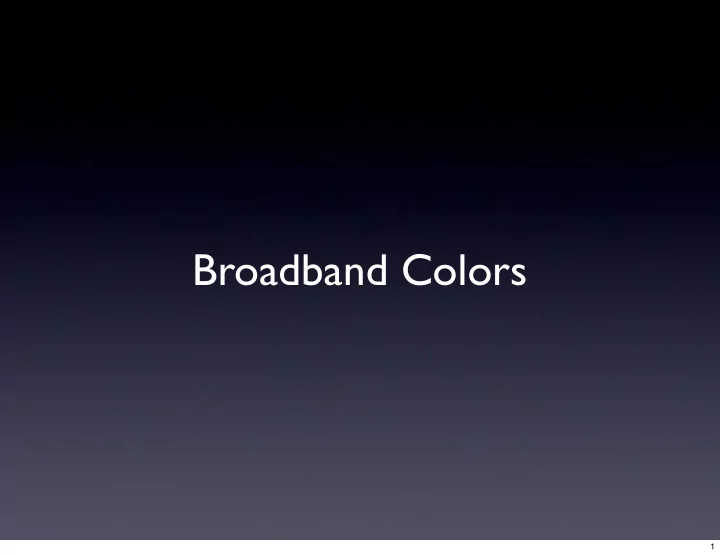

Broadband Colors 1
IC 3392 IC 3392 15 02 00 IC 3392 01 30 00 Ηα 00 30 Declination (J2000) NaD 00 Mgb Ηβ 14 59 30 Ηγ Ηδ 00 58 30 1’ 00 12 28 52 50 48 46 44 42 40 38 36 34 4.5 kpc Right Ascension (J2000) NGC 4569 NGC 4569 NGC 4569 13 14 12 NaD Declination (J2000) Ηα 10 Ηβ Mgb Ηγ Ηδ 08 06 1’ 04 12 37 10 05 00 36 55 50 45 40 35 30 Right Ascension (J2000) 4.5 kpc 09 13 00 NGC 4522 NGC 4522 NGC 4522 12 30 00 11 30 Declination (J2000) 00 10 30 Mgb NaD 00 Ηδ Ηβ 09 30 Ηα Ηγ 00 08 30 1’ 00 12 33 50 45 40 35 30 Right Ascension (J2000) 4.5 kpc 2
Color Magnitude Diagrams NGC 4580 NGC 4064 t > 400 Myr IC 3392 q NGC 4405 NGC 4388 NGC 4569 t = 200 − 350 Myr q NGC 4424 t < 100 Myr NGC 4522 q 3
Cortese & Hughes (2009) HI-normal late types occupy the blue cloud, but HI-deficient galaxies tend to scatter everywhere Figure 4. The link between H i -content and colour. Left: NUV − H colour vs. H i deficiency. The vertical dotted line separates galaxies with ‘normal’ gas content from H i -deficient systems. Center: NUV − H colour vs. gas-fraction. Right: F UV − H vs. gas-fraction. Late- and early- type galaxies are indicated with circles and squares respectively. Empty symbols highlight detected H i -deficient galaxies, while arrows show upper limits. The horizontal dashed-lines show the boundaries of the transition region, as defined in § 3. HI-deficiency correlates with color Figure 7. Same as Fig. 1 (left panel). Large symbols indicates galaxies in the Crowl & Kenney (2008) sample for which a strip- ping time-scale estimate is available. Stripping time-scale shorter than 300 Myr and between 300-500 Myr are shown with hexagons and triangles respectively. Using our own results against us 4
But, we know about HI morphologies . . . 5
1 . 0 (g-r) D HI /D B D HI /D K 6
1 . 0 (g-r) D HI /D B D HI /D K 7
Hogg et al (2004) High density environments ( δ 1x8 > 7.0) All Sersic values 8
Questions/Thoughts • What is the story of the paper? • Galaxies with large HI disks are blue; those with small HI disks are red • Galaxies that were stripped very recently occupy the blue cloud, those stripped longer ago occupy the green valley, and those stripped longest ago occupy the red sequence • It seems that it takes ~500 Myr to transform from blue to red. • Galaxies with disturbed HI disks have very recent star formation and blue colors; those with undisturbed disks have less recent star formation. • How are we different from Cortese & Hughes (2009)? • We know HI morphologies • We know (or think we know) what happened to a lot of these galaxies • What should we do about the fact that we are comparing cluster galaxies to all galaxies? • I think this comparison is important, but it would ALSO be great to compare our sample to a larger “cluster-like” sample. • Is it possible to get Blanton (2003)’s CMD with the environment data that Hogg et al. (2004) has for the brightest galaxies? • How important is this comparison to this paper? 9
Questions/Thoughts • Many things different things may have happened to the Virgo Cluster galaxies (RPS, mergers, harassment, starvation (?), etc.) • We only have timescales for the RPS galaxies; how much can we say about general timescales based on only the RPS results? • Is it reasonable to acknowledge that there are many things that happen and then focus on the RPS timescale results • Other things? 10
Recommend
More recommend